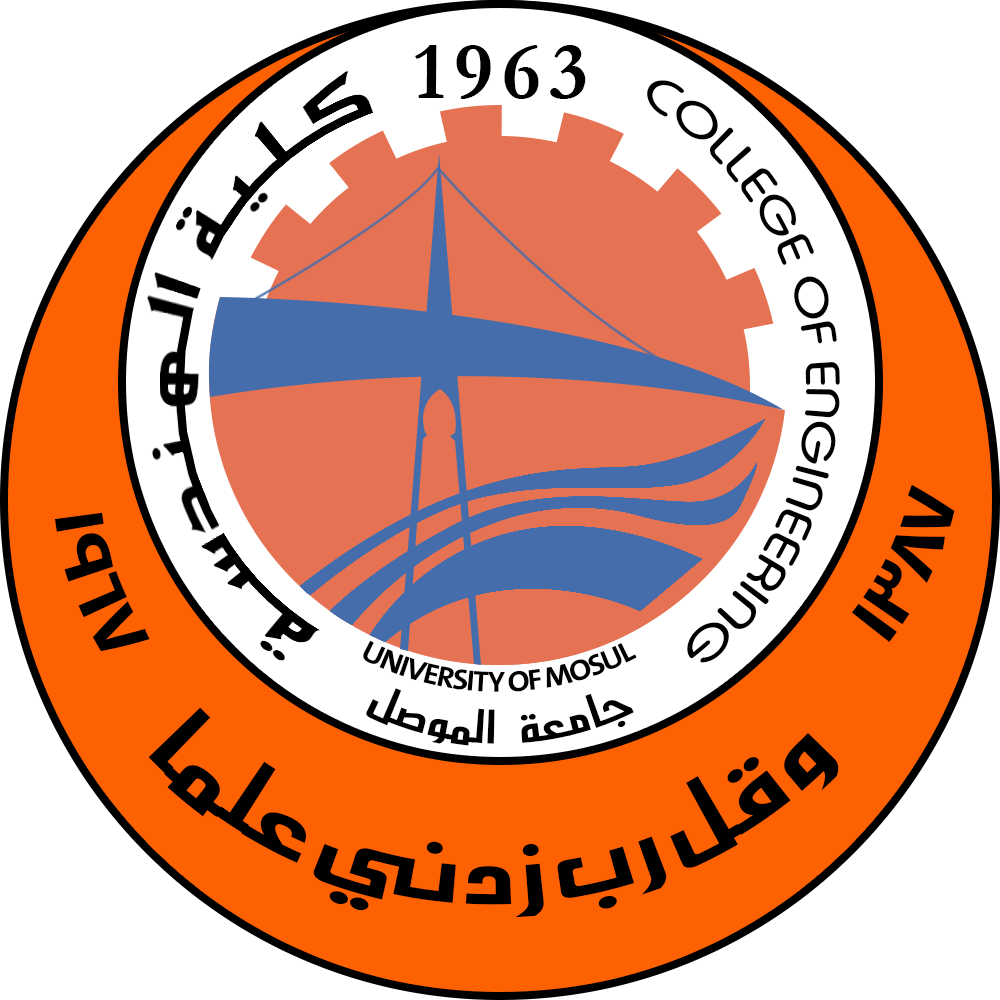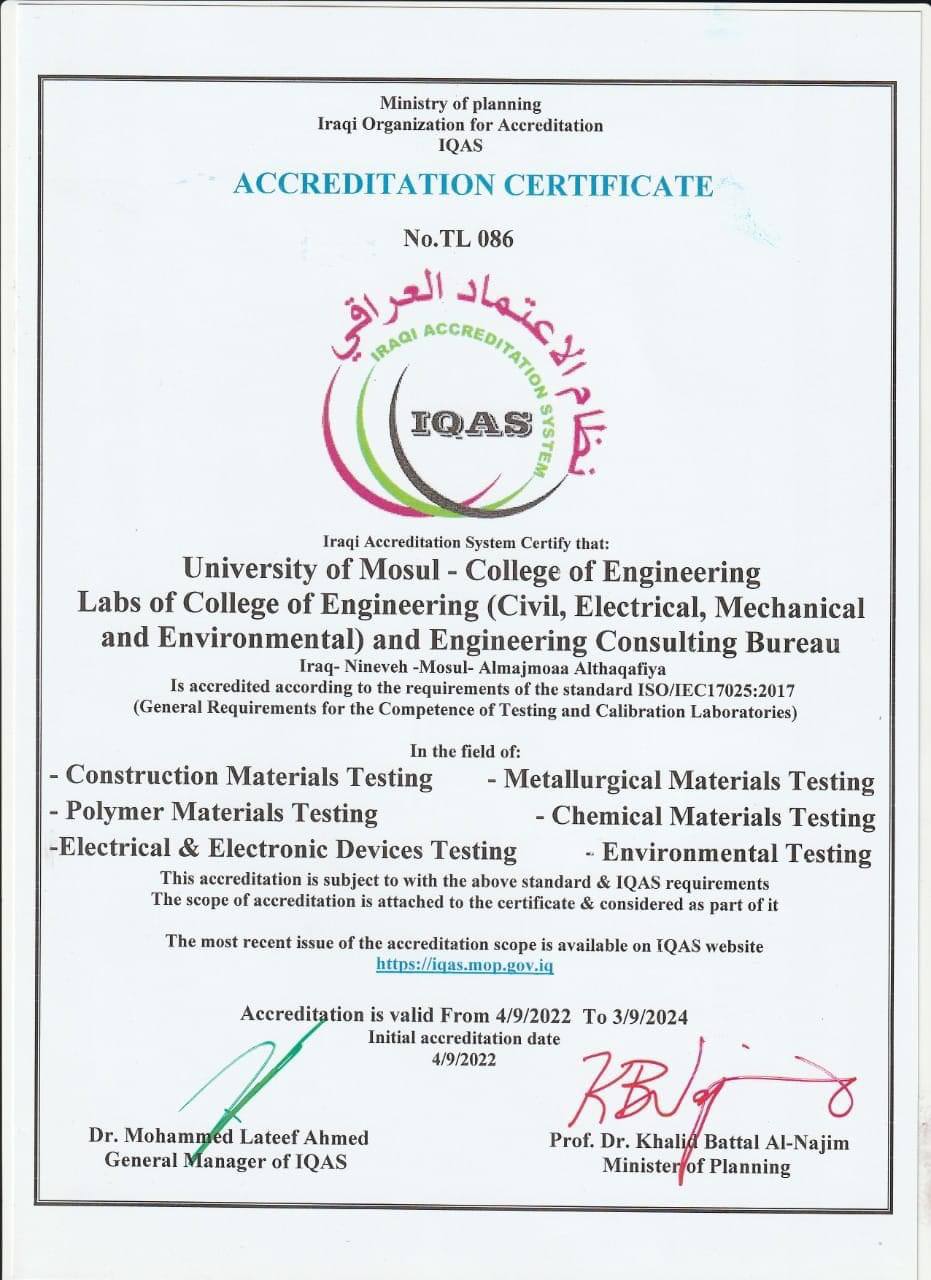Research Directions – Civil Engineering Department
The research Directions of Civil Engineering Department Lecturers are divided into three main axes, each according to their specialization: structural engineering, geotechnical engineering , and road and transportation engineering. They are summarized as follows:
Structural engineering:
- Developing building materials and improving their properties.
The world is witnessing rapid development in the production of basic construction materials and auxiliary materials, which motivates researchers to conduct research to study the performance of these materials to reach the optimal performance of engineering facilities.
- Evaluation and rehabilitation of facilities.
This direction includes identifying the origin of the damage, the causes of the damage, as well as selecting and applying appropriate treatment materials that restore the structural element to performing its design function in an integrated manner.
- Study and development of complex buildings.
Composite buildings are one of the modern sciences that deal with composite buildings made of concrete and steel. Research in this field deals with design studies, research and development, experimental investigations, theoretical analysis, and manufacturing techniques related to the application of composite components.
- Studies on bridge design and analysis.
Researchers address key design and analysis concepts in a single approach, including aspects of detailed design and modeling for different bridge types and structural materials.
- Nonlinear dynamic analysis of reinforced concrete structures.
Dynamic analysis includes the impact of earthquakes on reinforced concrete structures, assessment of damage to buildings, and the impact of both earthquakes and vehicle movement on bridges.
- Nonlinear structural analysis of the interaction between reinforced concrete structures and soil.
It includes studying the effect of the interaction between reinforced concrete structures and soil, taking into account the morphological relationships that describe the non-linear behavior of the soil and the elements of concrete structures at the same time.
Geotechnical engineering :
- Stability of underground structures under the influence of static and dynamic loads.
This research direction is usually carried out using software Available geotechnics, for example, Plaxis 2D and 3D software. The analysis and design of this type of facilities is very important in evaluating their stability . These facilities are: Tunnels , high-speed train tunnels, underground oil and gas tanks and mines. There are several important factors that must be taken into consideration in the design and analysis of these facilities, including the interaction between the facilities built above the ground and those built underground under the influence of static and dynamic loads, as well as the time order during the construction process and the types of supports used in the construction process.
- Sustainable development of waste use in geotechnical works .
Large quantities of waste are produced annually from demolition and construction waste, as well as from factories, which cause a serious problem for the environment. It is important to take this problem into consideration through scientific research that studies the problem and searches for solutions. This problem has encouraged researchers in the field of geotechnics to recycle this waste and use it in geotechnical works either as a construction material such as road works in the foundation and sub-base layers or as an additive to the soil to improve its engineering properties.
- Soil improvement techniques.
This line of research involves treating soils with engineering problems in various ways to improve their physical, mechanical and hydraulic properties. These soils include: swollen soils, gypsum soils , collapsing or collapsing soils, soils containing soluble materials, weak clay soils, as well as soils buried in a non-engineered manner. The purpose of improving soil properties is to change its geometrically unacceptable properties into geometrically acceptable properties. Among the treatment methods used are: mechanical methods, additive methods, injection methods, and soil reinforcement methods.
- Unsaturated soil mechanics and its applications.
This line of research is considered relatively recent, as its theories have been developed, which include three-dimensional stress analysis by taking into account shear stresses in addition to vertical and horizontal stresses. This field has wide applications, especially since it represents a real soil condition compared to the mechanics of saturated soil. The Department of Civil Engineering at the University of Mosul was the leader of this research trend among the countries of the Middle East, as it began in 2003 until now.
- Laboratory and numerical physical models to study soil behavior.
This line of research is wide-ranging as it includes creating models to simulate reality for many cases of geotechnical applications , for example: studying seepage and stability of slopes, retaining walls, soil bearing and subsidence for shallow and deep foundations, earth dams. The model may be hypothetical for scientific research purposes or a realistic case study to address an existing problem. As for numerical models, there is existing software used for this purpose, including Geostudio , GeoFive , as well as 2D and 3D Plexus . In this type of model, the research includes studying variables and then using the results to design special tables useful to the geotechnical engineer . The results can also be compared with similar real-life cases. As for the physical model, there is room for creativity, as modern techniques and systems are introduced for examination and data acquisition, through which important geotechnical properties can be measured , for example, pore water pressure, deformation and subsidence, as well as soil resistance along the model section.
- Soil dynamics and earthquakes.
dynamics , includes the kinetic loads that are transmitted from structures to the soil in the form of vibrational waves, for example, loads coming from machines or any other vibrational loads. This type of research can be carried out using a software program Existing geotechnics, for example , 2D or 3D Plexus . As for the other line of research, which includes the loads coming from earthquakes. Due to the occurrence of several earthquakes in different places in the country (Iraq), geotechnical researchers were motivated to initiate a line of research in our department in this direction. The research includes conducting an analysis of the site’s response to earthquakes using the Diep program Swail or one of the programs Geotechnics Others that serve the same purpose, as well as studying the interaction between soil and structure under the influence of earthquakes using the three-dimensional Plaxis program.
Road and transportation engineering
- Developing flexible paving materials and improving their properties.
In general, all materials used in the construction and maintenance of roads and airports can be studied and examined to develop or improve the use of mixtures Asphalt , thus prolonging the service life of the road and reducing the cost of regular maintenance.
- Studies on the design and analysis of ground and bridge intersections , airports and railways.
Researchers deal with key engineering design and analysis concepts for ground crossings, bridges , airports and railways, including detailed design aspects of different types of ground crossings and bridges .
- Studies on urban planning and road traffic regulation works.
Researchers deal with urban planning concepts and major traffic regulation for roads and parking, including detailed design and modeling aspects.

